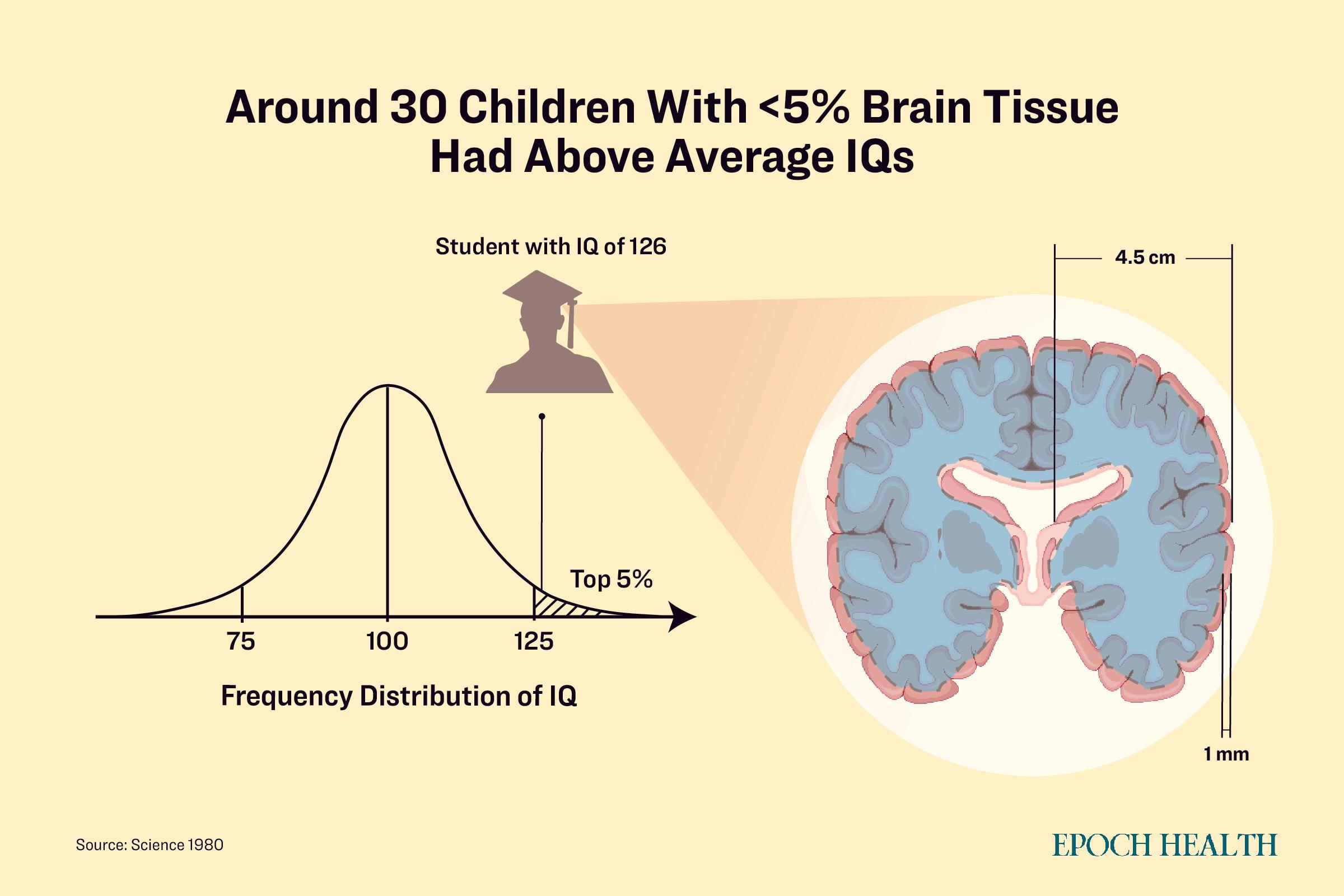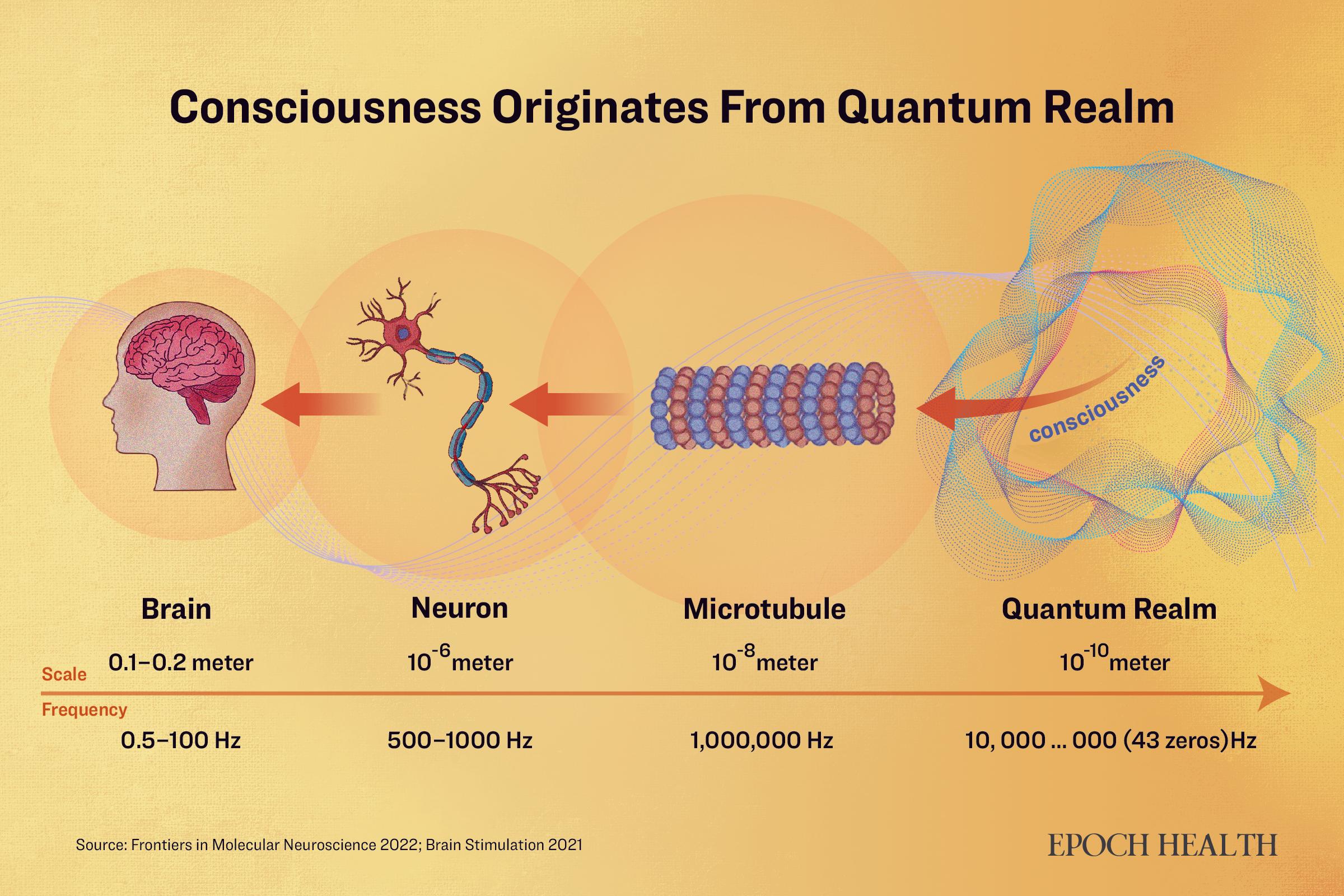Many doctors and biomedical students may have been taught the same about consciousness. However, scientists are still debating whether that theory holds true.
Imagine a child observing an elephant for the first time. Light reflects off the animal and enters the child’s eyes. Retinal photoreceptors in the back of the eyes convert this light into electrical signals, which travel through the optic nerve to the brain’s cortex. This forms vision or visual consciousness.
How do these electrical signals miraculously transform into a vivid mental image? How do they turn into the child’s thoughts, followed by an emotional reaction—“Wow, the elephant is so big!”
‘Brainless’ but Not Mindless
The Lancet recorded a case of a French man diagnosed with postnatal hydrocephalus—excess cerebrospinal fluid on or around the brain—at the age of 6 months.
Despite his condition, he grew up healthy, became a married father of two children, and worked as a civil servant.
When he was 44 years old, he went to the doctor due to a mild weakness in his left leg. The doctors scanned his head thoroughly and discovered that his brain tissue was almost entirely gone. Most of the space in his skull was filled with fluid, with only a thin sheet of brain tissue.
The man had been living a normal life and had no problem seeing, feeling, or perceiving things.
The Lancet recorded a case of a French civil servant diagnosed with postnatal hydrocephalus at the age of 6 months. Later, an MRI revealed massive enlargement of the lateral, third, and fourth ventricles, a very thin cortical mantle, and a posterior fossa cyst. Illustrated by The Epoch Times
The normal brain cortex is responsible for sense and movement, and the hippocampus is responsible for memory. Hydrocephalus patients lose or have significantly less volume of these brain regions, yet they can still perform related functions.
Even without substantial brains, these people can have above-average cognitive function.
Among them, one university student had excellent grades, a first-class honors degree in mathematics, an IQ of 126, and was socially normal. This math genius’s brain was only 1 millimeter thick, while an average person’s is usually 4.5 centimeters thick—44 times larger.

An analysis of more than 600 cases of children with hydrocephalus found that of the 60 cases where fluid took up 95 percent of the skull, around 30 had above average IQs. The right side of the figure illustrates the brain image of one college student with a 1 mm thick brain who had a 126 IQ, placing him in the top 5 percent of the higher end of the population. The Epoch Times
The Invisible Brain
“The important thing about Lorber is that he’s done a long series of systematic scanning rather than just dealing with anecdotes.” Patrick Wall (1925–2001), professor of anatomy at University College London, was quoted as saying in an article by Roger Lewin published in Science in 1981 discussing Lorber’s article.
The cases of people without brains challenge the conventional teachings that brain structure is the basis for generating consciousness. Is our brain—weighing about three pounds, with roughly two billion neurons connected by around 500 trillion synapses—the real source of consciousness?
Some scientists have proposed that deep and invisible structures in the brain explain normal cognitive function—even with severe hydrocephalus. These structures may not be easily visible on conventional brain scans or to the naked eye. However, the fact that they are not readily apparent doesn’t mean they don’t exist or aren’t important for brain function.
“For hundreds of years neurologists have assumed that all that is dear to them is performed by the cortex, but it may well be that the deep structures in the brain carry out many of the functions assumed to be the sole province of the cortex,” Wall commented in the 1981 article.
These unknown deep structures “are undoubtedly important for many functions,” said neurologist Norman Geschwind (1926–1984) from Beth Israel Hospital, affiliated with Harvard University, in the 1981 article.
Furthermore, the deep structures “are almost certainly more important than is currently thought,” said David Bowsher, a professor of neurophysiology at the University of Liverpool in the UK, in the same article.
The source of consciousness may exist in realms we’ve yet to explore. When medical theories can’t solve a mystery, physics might step in with a plot twist—in particular—quantum physics.
Beyond Neurons
“To understand consciousness, we can’t just look at the neurons,” Dr. Stuart Hameroff, director of the Center for Consciousness Studies at the University of Arizona, told The Epoch Times.

Even single-celled organisms like paramecium demonstrate purposeful behaviors such as swimming, avoiding obstacles, mating, and learning without having a single synapse or being part of a neural network. Lebendkulturen.de/Shutterstock
The proteins that make up microtubules (tubulin) are “the most prevalent or abundant protein in the whole brain,” Hameroff told The Epoch Times. He hypothesizes that microtubules are key players in human consciousness.
“Because [when] you look inside neurons, you see all these microtubules, and they’re in a periodic lattice, which is perfect for information processing and vibrations,” Hameroff stated.
Quantum Devices
British physicist, mathematician, and Nobel Laureate Sir Roger Penrose and Hameroff hypothesized a theory that quantum processes generate consciousness.
Quantum refers to tiny units of energy or matter at a microscopic level. Its unique features can help us understand many things that current science cannot explain.
In simple terms, microtubules act as a bridge between the quantum world and our consciousness. They take quantum signals, amplify them, organize them, and somehow, through processes we don’t fully understand, turn them into the feelings, perceptions, and thoughts that make up our conscious awareness.
Microtubules can explain bewildering facts about the brain. Hameroff posits that the brains of individuals born with hydrocephalus can adapt as their microtubules control neuroplasticity and reorganize their brain tissue.
“So over time, the microtubules in that brain adapt and rearrange themselves to sustain consciousness and cognition,” he said.
Therefore, according to Hameroff, our brains serve like information processors, receiving signals from the universe and forming them into consciousness.

According to neuroscientist Hameroff and Nobel Laureate Sir Roger Penrose, our brains serve as information processors, receiving signals from the universe and forming them into consciousness. Microtubules, the most abundant proteins in neurons, may act as a bridge to collect the waves from the quantum world into our brains. Once processed in the brain, consciousness is generated.
A Quantum Orchestra
“Rather than a computer of simple neurons, the brain is a quantum orchestra,” Hameroff described, “Because you have resonances and harmony and solutions over different frequencies, much like you do in music. And [so] I think consciousness is more like music than it is a computation.”
Science is always evolving. The study of consciousness is still an area of active research and debate in neuroscience and philosophy.
However, each new discovery opens up new possibilities. As we continue to explore these mysteries, let’s remain curious and open-minded.
Next, we will discuss reports published by physicians in highly-ranked journals, offering more insights into the nature and origin of consciousness.
Source link







































Add comment